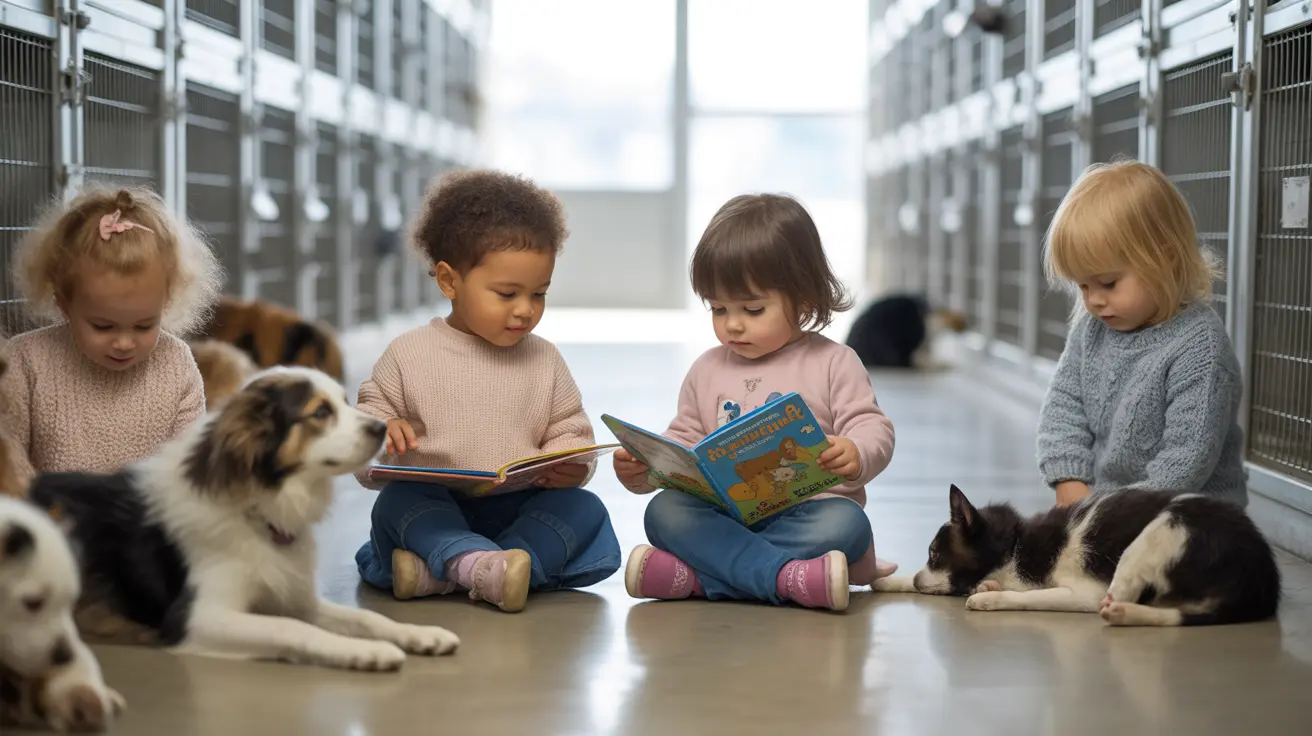The Storybook Theater Club recently made a heartwarming visit to Friends of Animals rescue, bringing the magic of literature directly to the animals awaiting their forever homes. This touching initiative demonstrates how reading to shelter animals can create meaningful connections between young volunteers and rescue pets while providing valuable enrichment for animals in care.
The enthusiastic group of children arrived with their favorite storybooks, settling in comfortably to read aloud and interact with various rescue animals. This type of animal-assisted literacy program represents a growing trend in humane education, combining the love of reading with compassionate care for shelter pets.
Benefits of Reading to Dogs and Cats in Shelters
Reading programs at animal shelters offer remarkable advantages for both the animals and the young participants. For shelter pets, the gentle presence of children reading provides crucial social interaction and mental stimulation. The calm, rhythmic sound of a child's voice can help reduce stress levels in anxious animals, creating a soothing environment that promotes emotional well-being.
Dogs and cats in rescue environments often experience elevated stress due to unfamiliar surroundings, loud noises, and limited human contact. When children engage in reading to rescue dogs and reading to rescue cats, they provide consistent, non-threatening interaction that helps animals develop positive associations with people.
Animal Shelter Reading Programs: Building Community Connections
The Storybook Theater Club's visit to Friends of Animals exemplifies how youth volunteer programs for animals can strengthen community bonds while addressing multiple needs simultaneously. These animal shelter community programs create opportunities for children to develop empathy, responsibility, and public speaking skills while contributing meaningfully to animal welfare.
Such initiatives also serve as powerful tools for humane education for kids, teaching young people about responsible pet ownership, animal care, and the importance of supporting rescue organizations. Children who participate in these programs often become lifelong advocates for animal welfare.
Reading Therapy for Animals: Creating Calm Environments
The concept of reading therapy for animals is gaining recognition among animal behaviorists and shelter professionals. When children read aloud to shelter pets, they create a peaceful atmosphere that contrasts sharply with the often chaotic shelter environment. This type of shelter animal enrichment helps reduce behavioral issues that can develop from prolonged stress and boredom.
For shy or traumatized animals, the presence of gentle young readers can be particularly beneficial. The non-demanding nature of the interaction allows animals to approach at their own pace, building confidence and trust gradually.
Animal Shelter Volunteer Opportunities for Young People
Programs like the one at Friends of Animals demonstrate the value of creating appropriate animal shelter volunteer opportunities for children. While young volunteers may not be able to handle all aspects of animal care, reading programs provide a safe, supervised way for them to contribute meaningfully to shelter operations.
These experiences often inspire children to continue their involvement in animal welfare as they grow older, creating a pipeline of future volunteers and advocates. Many shelters report that children who participate in reading programs often return as adult volunteers or adopt pets from the same facilities.
Frequently Asked Questions
How does reading to shelter animals help reduce their stress?
Reading provides a calm, consistent human presence that helps shelter animals feel more secure. The gentle sound of a child's voice creates a soothing environment, while the non-threatening interaction allows stressed animals to relax and experience positive human contact at their own pace.
Can children safely participate in reading programs at animal shelters?
Yes, when properly supervised by shelter staff and volunteers. Most reading programs are designed with safety protocols that ensure children interact only with animals that have been evaluated for temperament. Adult supervision ensures both the children and animals remain comfortable throughout the experience.
What are the benefits of reading to dogs and cats in shelters?
Reading programs provide mental stimulation and social interaction for shelter animals while helping them develop positive associations with people. For children, these programs build empathy, confidence, and public speaking skills while teaching valuable lessons about animal welfare and community service.
Making a Lasting Impact
The Storybook Theater Club's visit to Friends of Animals represents more than just a single day of reading—it demonstrates how simple acts of kindness can profoundly impact both animals and young people. These programs create lasting memories for participants while providing essential enrichment for shelter animals.
As more communities recognize the mutual benefits of reading to shelter animals, programs like these continue to grow, creating stronger bonds between young people and the animals who need their compassion most.






